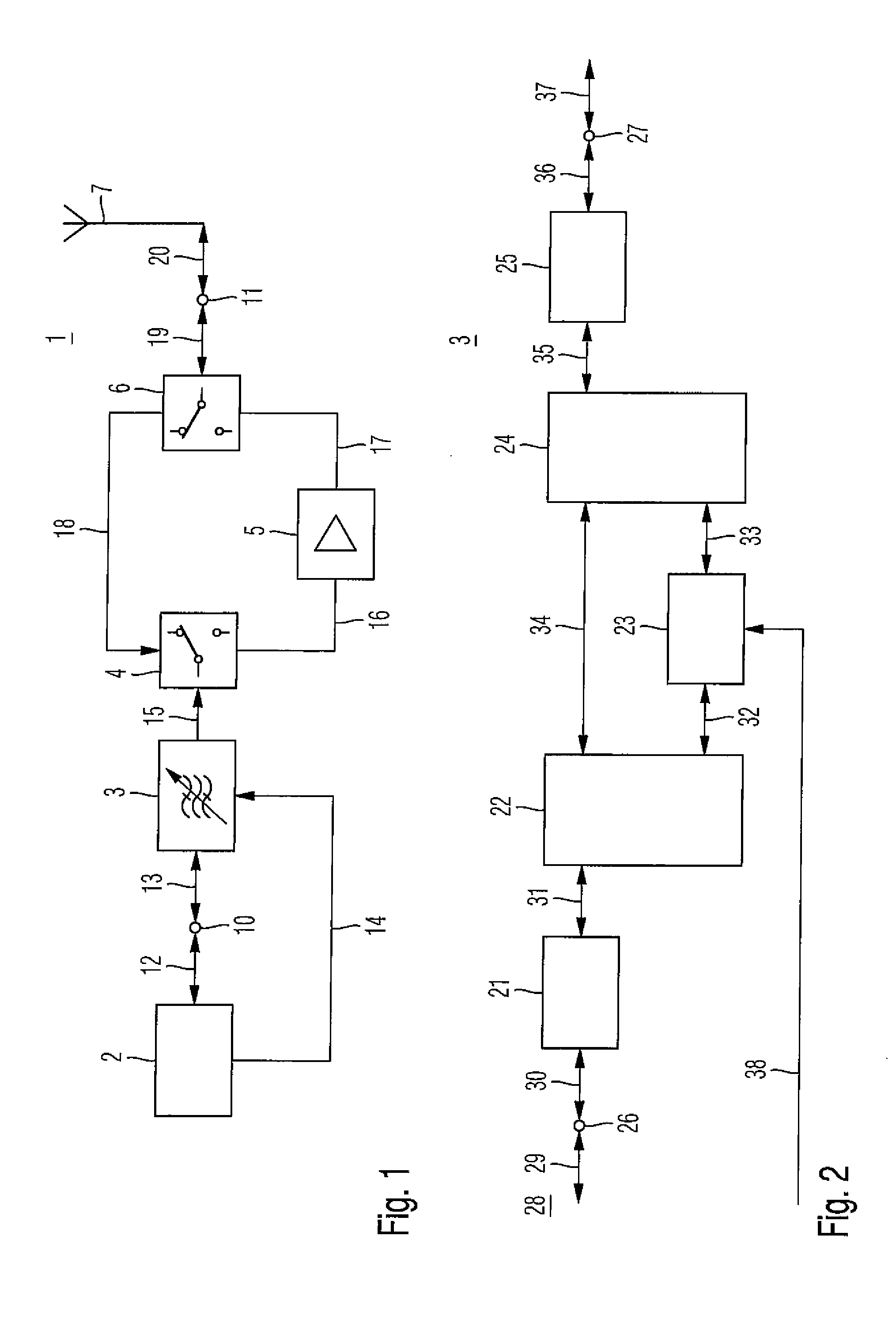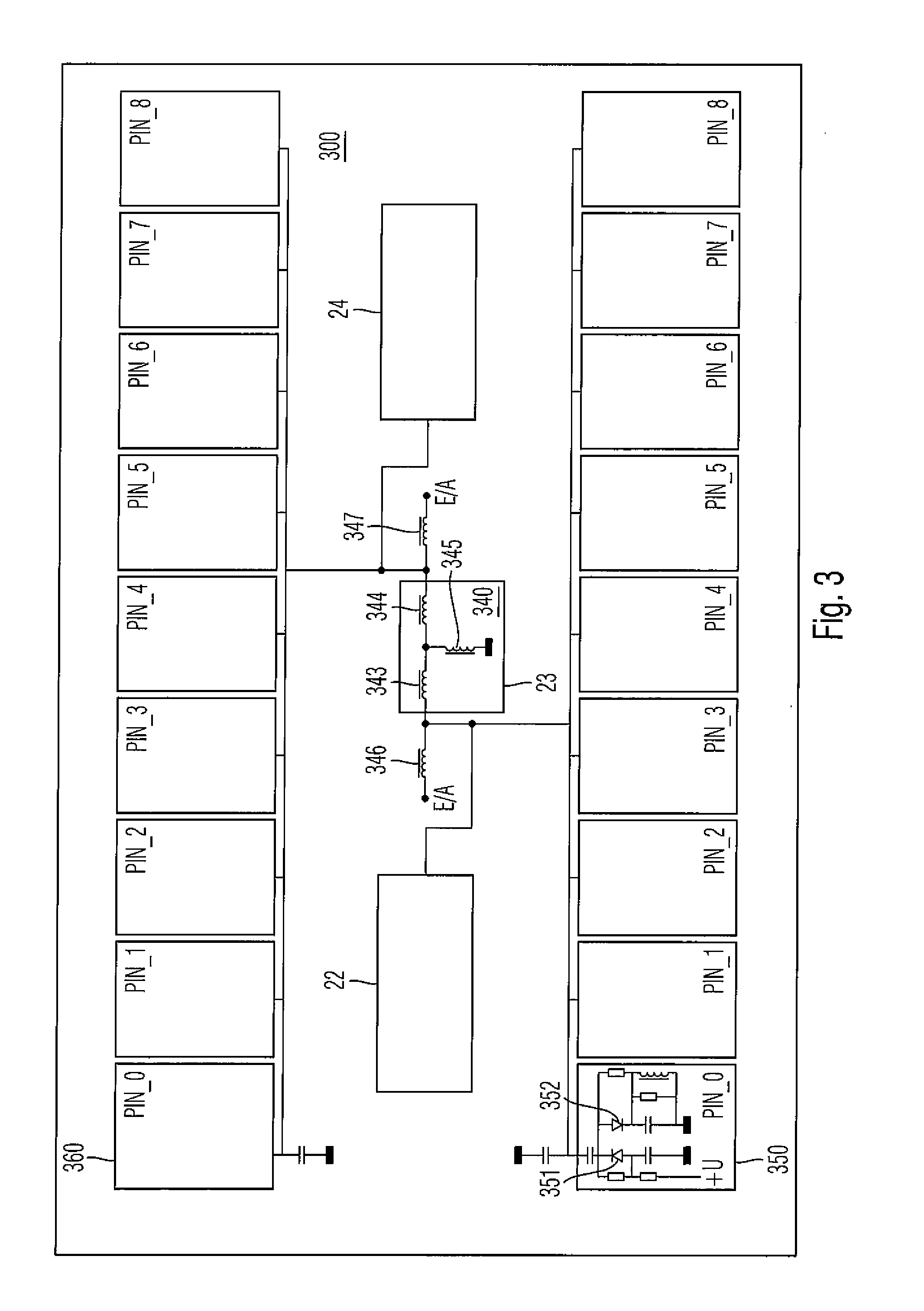Switchable band-pass filter
a bandpass filter and switchable technology, applied in waveguide devices, electrical equipment, impedence networks, etc., can solve the problems of large mechanical dimensions, heavy mass, and robustness of filters, and achieve the effect of optimum flatness of filter transmission functions and small space requirements
- Summary
- Abstract
- Description
- Claims
- Application Information
AI Technical Summary
Benefits of technology
Problems solved by technology
Method used
Image
Examples
Embodiment Construction
[0028]Before focusing on the structure of the switchable band-pass filter according to the invention, an appropriate application for the filter in a communications device 1 will first be described with reference to FIG. 1. A transceiver 2 is connected via a switchable band-pass filter 3 to an antenna 7. The mid-frequency for the signal 13, 15 to be transmitted or to be received is specified to the switchable band-pass filter 3 via a digital signal 14. The band-pass filter 3 is contained both in the transmission path 12, 13, 15, 16, 17, 19, 20 and also in the reception path 20, 19, 18, 15, 13, 12 of the communications device. Within the transmission path, a power amplifier 5 is additionally connected into the transmission signal path via the switches 4, 6 (realizable, for example, by circulators 4, 6). If the transceiver 2 is operated in frequency-hopping mode (English: frequency hopping), the mid-frequency of the band-pass filter, switched via the digital signal 14 from the transcei...
PUM
 Login to View More
Login to View More Abstract
Description
Claims
Application Information
 Login to View More
Login to View More - R&D
- Intellectual Property
- Life Sciences
- Materials
- Tech Scout
- Unparalleled Data Quality
- Higher Quality Content
- 60% Fewer Hallucinations
Browse by: Latest US Patents, China's latest patents, Technical Efficacy Thesaurus, Application Domain, Technology Topic, Popular Technical Reports.
© 2025 PatSnap. All rights reserved.Legal|Privacy policy|Modern Slavery Act Transparency Statement|Sitemap|About US| Contact US: help@patsnap.com



